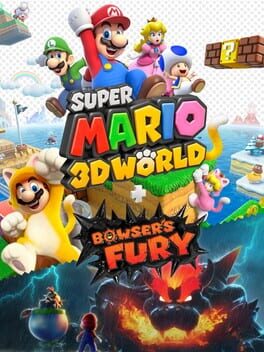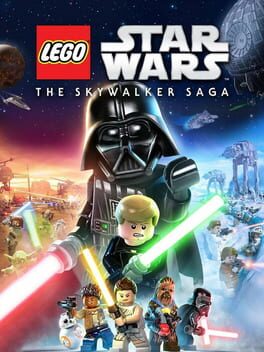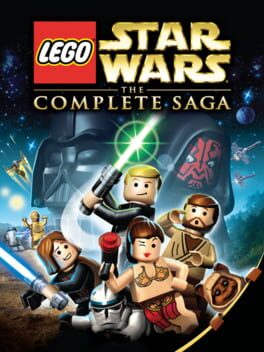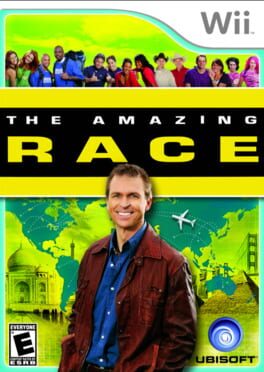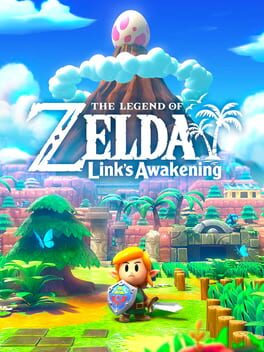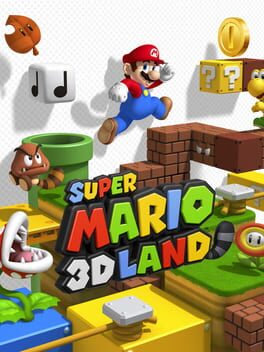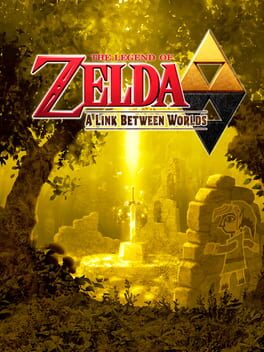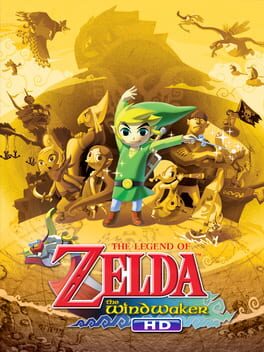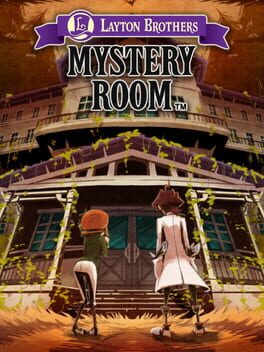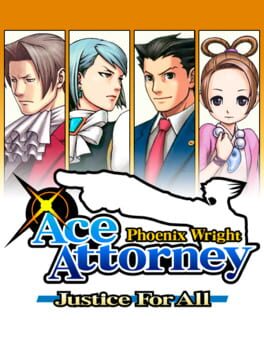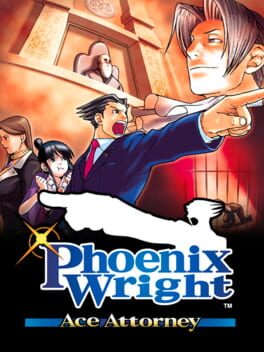Spiritofkoridai
Bowser's Fury is a neat expansion with a cool progression idea, and aside from maybe wanting a bit more from it, I don't have any meaningful complaints about the way the extra mode plays. The main game itself is not too shabby either, but I'm not particularly fond of the "3D" take on what is ultimately Mario's 2D formula.
I view the express benefit of the 3D space to be the greater ability to explore and discover as well as facilitating different kinds of objectives. Odyssey & even Bowser's Fury do this well enough, and the Galaxy games' levels have enough anti-gravity or otherwise unconventional layouts that none of it feels transparently linear in nature. 3D World by comparison feels very limited in its scope and only a marginal improvement over 3D Land when not accounting for the consistent nostalgic Mario theming. The levels can feel like they've ended as soon as they've begun, collectibles are exceedingly straightforward to find, and due to the accommodations made to support 4 players, the difficulty curve is way less steep than even 3D Land. The beautiful worlds and environments are almost wasted on levels that occasionally feel interchangeable and can only be approached and appreciated in one way -- pretty backgrounds over an equally as pretty basic straight path.
There's still plenty of fun to be had here, I've heard good things about the online play also, and Bowser's Fury at least rounds out the package well either way, but this is 3D Mario's closest analog to the New Super Mario Bros. format, and I wish there were more bold design ideas on display in general. Increasingly clear to me is the fact that most of Nintendo's ideas for Mario are recycled or re-imagined interpretations of their early gaming years, and that tactic threatens to lose its luster after so many iterations.
I view the express benefit of the 3D space to be the greater ability to explore and discover as well as facilitating different kinds of objectives. Odyssey & even Bowser's Fury do this well enough, and the Galaxy games' levels have enough anti-gravity or otherwise unconventional layouts that none of it feels transparently linear in nature. 3D World by comparison feels very limited in its scope and only a marginal improvement over 3D Land when not accounting for the consistent nostalgic Mario theming. The levels can feel like they've ended as soon as they've begun, collectibles are exceedingly straightforward to find, and due to the accommodations made to support 4 players, the difficulty curve is way less steep than even 3D Land. The beautiful worlds and environments are almost wasted on levels that occasionally feel interchangeable and can only be approached and appreciated in one way -- pretty backgrounds over an equally as pretty basic straight path.
There's still plenty of fun to be had here, I've heard good things about the online play also, and Bowser's Fury at least rounds out the package well either way, but this is 3D Mario's closest analog to the New Super Mario Bros. format, and I wish there were more bold design ideas on display in general. Increasingly clear to me is the fact that most of Nintendo's ideas for Mario are recycled or re-imagined interpretations of their early gaming years, and that tactic threatens to lose its luster after so many iterations.
Haven't touched since the month of release, but this was a fun game when it decided to not crash. Seriously, this title is an improvement from the original games with more engaging combat, varied objectives, expansive areas to explore and less challenges in levels that solely boil down to being the correct character. So as fun as modern LEGO games regularly go, whatever your threshold for acceptance of that is.
The biggest problems are with certain spaceship encounters where the camera freaks the fuck out and it's impossible to get your bearings, and the game itself having trouble staying awake.
No, seriously, it crashed no less than 10 times during my 1 playthrough, what da heck 😯
The biggest problems are with certain spaceship encounters where the camera freaks the fuck out and it's impossible to get your bearings, and the game itself having trouble staying awake.
No, seriously, it crashed no less than 10 times during my 1 playthrough, what da heck 😯
Played this game a few months back to look back on fond childhood experiences and it didn't resonate this time. Most actions just become repetitive very quickly, a good portion the levels are themed after unmemorable parts from the movies and aren't any more exciting to play, and that's before event touching the topic of vehicle missions entirely. Just felt very tedious to play all around, with the cutscenes far and away some of the most memorable content.
I think plenty of kids would still really like this if they were playing for the first time today, and this game still remains a formative part in my interest of gaming, but it just didn't hit the same high notes. It wasn't a miserable experience, but I get tired now.
I think plenty of kids would still really like this if they were playing for the first time today, and this game still remains a formative part in my interest of gaming, but it just didn't hit the same high notes. It wasn't a miserable experience, but I get tired now.
2022
This review contains spoilers
This is such a tragic turn of events. After having been legitimately invested for the first two islands and much of the third, and mind you, still having a degree of appreciation for the overall gameplay loop introduced here, most of the second half of the game falls so short of expectations that the game as a whole is unable to truly prove itself as a reliably sustainable format for the series to rely on. Sonic Team clearly don't have the amount of resources needed to push and shove Sonic all the way into the echelons of the AAA gaming space without a decade of dev time at least. It becomes a game that's okay if I'm feeling generous, and is definitely not representative of a evolutionary leap forward when considered as a whole.
From a gameplay standpoint, there are substantial aspects that I do like: Sonic has one of my favorite control schemes of his in the open zones and I can see the purpose as to why disjointed platforms are the main means of conveying basic platforming challenges in the open zones. Big's fishing is a good ol' chill time, and the first two islands especially have just enough going on between the different types of content that one doesn't overstay its welcome for too long; despite some jank (negative connotation) with fighting some of the Guardians and practical annoyances with traversal, it's generally enough to keep engagement alive. Despite this, not only is it obvious how half-baked the 4th and 5th islands are, but so much of the open nature of the game becomes more and more reeled in as the game continues, mostly leading towards awkwardly fighting against the open zones' 2D sections and the realization that almost none of the platforming sequences in the game actually encouraged maximizing your own sense of speed in any way. I almost wish the open areas leaned more into Spyro (mostly 1's) level design in the sense that using speed combined with the air boost to intentionally direct players to burst onto unexpected, yet organic environments for rewards would probably be more satisfying when offset by slower platforming build-ups. In comparison, the whole floating rail concept has poor signposting with every one being identical in design and function regardless of whether it serves as fast travel or an already completed sequence, and designing these shorter linear obstacle courses has got to be more taxing for the developers to implement than simply using the natural contours of the environment effectively as the dominant means of traversal. I kind of like Cyberspace as presented (his handling is refreshingly doable instead of haphazard and inconsistent-feeling), but agree with the majority online that there's no reason for every move you make to feel like Sonic's hampering his own speed, and in general his boost should be made faster. In one instance, one of the falling Sky Sanctuary spirals was made impossible to race up without air boosting past two initial platforms instead of jumping on them as was seemingly intended. The red ring requirements should have required multiple runs of the levels at least, and the amount of control reliability at the start of the game was hard to reckon with at first, but that eventually settles and all the cyberspace levels start to feel about the same, which is basically fine and enjoyable enough.
However, I need to get this off my chest: the writing is probably consistently the worst part of this game, and the part that I kept returning to both during and after my playthrough as a specific sticking point that reveals how little foresight was made in handling this game's characters and premise potential. A major reason for this is the self-defeating decision to treat the series up to this point, including 2010's era Sonic, as though it's a linear timeline while still attempting to inject the side characters with completely different attributes. I think it's nice on a surface level, e.g., that Tails and Amy are not only defined by being nerdy and swoony respectively anymore, but this doesn't mean that their contributions this time around feel any more natural or substantial than when they were standing in a Sonic Generations-brand void. In fact, of the three of Sonic's friends, Knuckles is handled by far the best, with not only his own take on on the Starfall Islands and connections to Angel Island that naturally only he would know, but also some emotional moments interacting with Sonic that genuinely land. Tails and Amy, however, both feel like their existence revolves around being stand-ins for Internet fandom criticism of themselves without any actual purpose or resolution to their insecurities beyond that base level recognition. It can be viewed as a step in the right direction, but an apology for past bad writing doesn't constitute good writing on its own, and very little is actually achieved through either of their portrayals aside from retreading old ground (Tails) or practically sowing over that old ground without anything compelling character-wise to replace it (Amy why, they did you so dirty what the hell).
Not to mention the amount of fanbase lip service as a whole borders on tedious. There are more subtle and organic ways to invoke past entries without throwing me out of the game I'm currently playing to remind me of another with very little prompting; the namedrops can be genuinely grating at times. The new ideas that do have potential to be explored, like the extent of Sage and Eggman's relationship, is practically relegated to side content in comparison to the number of times Tails has to remind me that the volcanic crater on Chaos Island looks like the Biolizard's butthole. It's astounding that the new ideas presented in this game are given so little room to breathe in comparison while the reliance on old titles is just as prevalent and ultimately meaningless as is familiar for this series of late. Eggman's memos do fare better in this regard though: this sort of optional reward for playing a certain side mode that is just Eggman musing to himself feels much more appropriate for a Sonic history lesson. There are only so many scenes in this game, optional or mandatory, that feel natural to engage with as opposed to serving as hollow reassurance for the playerbase it's trying to win back that the characters can exist as non-caricatures again, and that's just nowhere near enough to paper over a story that has too little going on otherwise. I didn't even mention a single thing about the Ancients here because I have no reason to be invested in their story aside from Knuckles' brief Angel Island deduction; it's lore additions without a gut punch, very little reason to care.
Final general notes: This game is a blueprint of itself in both writing and game design, and while it is valid to view it as a step in a more ideal direction for Sonic and in some regards I agree, its most pressing criticism has spoken more to me and it speaks volumes that after all this dev time, the effort isn't all the way there yet in creating something truly compelling and complete feeling. I cannot speak to what exactly this series "needs" at any given time or what is best in order to excel for both Sonic's die-hard fans and people who just want a solid game with no strings attached, but I don't think what it needed amounts to an apology notice for the last 10 years and a messy, rushed latter half. Even considering the gameplay aspects I'd like to see more of, there's so much more this title could have potentially offered on a fundamental level.
Baby steps, I suppose.
From a gameplay standpoint, there are substantial aspects that I do like: Sonic has one of my favorite control schemes of his in the open zones and I can see the purpose as to why disjointed platforms are the main means of conveying basic platforming challenges in the open zones. Big's fishing is a good ol' chill time, and the first two islands especially have just enough going on between the different types of content that one doesn't overstay its welcome for too long; despite some jank (negative connotation) with fighting some of the Guardians and practical annoyances with traversal, it's generally enough to keep engagement alive. Despite this, not only is it obvious how half-baked the 4th and 5th islands are, but so much of the open nature of the game becomes more and more reeled in as the game continues, mostly leading towards awkwardly fighting against the open zones' 2D sections and the realization that almost none of the platforming sequences in the game actually encouraged maximizing your own sense of speed in any way. I almost wish the open areas leaned more into Spyro (mostly 1's) level design in the sense that using speed combined with the air boost to intentionally direct players to burst onto unexpected, yet organic environments for rewards would probably be more satisfying when offset by slower platforming build-ups. In comparison, the whole floating rail concept has poor signposting with every one being identical in design and function regardless of whether it serves as fast travel or an already completed sequence, and designing these shorter linear obstacle courses has got to be more taxing for the developers to implement than simply using the natural contours of the environment effectively as the dominant means of traversal. I kind of like Cyberspace as presented (his handling is refreshingly doable instead of haphazard and inconsistent-feeling), but agree with the majority online that there's no reason for every move you make to feel like Sonic's hampering his own speed, and in general his boost should be made faster. In one instance, one of the falling Sky Sanctuary spirals was made impossible to race up without air boosting past two initial platforms instead of jumping on them as was seemingly intended. The red ring requirements should have required multiple runs of the levels at least, and the amount of control reliability at the start of the game was hard to reckon with at first, but that eventually settles and all the cyberspace levels start to feel about the same, which is basically fine and enjoyable enough.
However, I need to get this off my chest: the writing is probably consistently the worst part of this game, and the part that I kept returning to both during and after my playthrough as a specific sticking point that reveals how little foresight was made in handling this game's characters and premise potential. A major reason for this is the self-defeating decision to treat the series up to this point, including 2010's era Sonic, as though it's a linear timeline while still attempting to inject the side characters with completely different attributes. I think it's nice on a surface level, e.g., that Tails and Amy are not only defined by being nerdy and swoony respectively anymore, but this doesn't mean that their contributions this time around feel any more natural or substantial than when they were standing in a Sonic Generations-brand void. In fact, of the three of Sonic's friends, Knuckles is handled by far the best, with not only his own take on on the Starfall Islands and connections to Angel Island that naturally only he would know, but also some emotional moments interacting with Sonic that genuinely land. Tails and Amy, however, both feel like their existence revolves around being stand-ins for Internet fandom criticism of themselves without any actual purpose or resolution to their insecurities beyond that base level recognition. It can be viewed as a step in the right direction, but an apology for past bad writing doesn't constitute good writing on its own, and very little is actually achieved through either of their portrayals aside from retreading old ground (Tails) or practically sowing over that old ground without anything compelling character-wise to replace it (Amy why, they did you so dirty what the hell).
Not to mention the amount of fanbase lip service as a whole borders on tedious. There are more subtle and organic ways to invoke past entries without throwing me out of the game I'm currently playing to remind me of another with very little prompting; the namedrops can be genuinely grating at times. The new ideas that do have potential to be explored, like the extent of Sage and Eggman's relationship, is practically relegated to side content in comparison to the number of times Tails has to remind me that the volcanic crater on Chaos Island looks like the Biolizard's butthole. It's astounding that the new ideas presented in this game are given so little room to breathe in comparison while the reliance on old titles is just as prevalent and ultimately meaningless as is familiar for this series of late. Eggman's memos do fare better in this regard though: this sort of optional reward for playing a certain side mode that is just Eggman musing to himself feels much more appropriate for a Sonic history lesson. There are only so many scenes in this game, optional or mandatory, that feel natural to engage with as opposed to serving as hollow reassurance for the playerbase it's trying to win back that the characters can exist as non-caricatures again, and that's just nowhere near enough to paper over a story that has too little going on otherwise. I didn't even mention a single thing about the Ancients here because I have no reason to be invested in their story aside from Knuckles' brief Angel Island deduction; it's lore additions without a gut punch, very little reason to care.
Final general notes: This game is a blueprint of itself in both writing and game design, and while it is valid to view it as a step in a more ideal direction for Sonic and in some regards I agree, its most pressing criticism has spoken more to me and it speaks volumes that after all this dev time, the effort isn't all the way there yet in creating something truly compelling and complete feeling. I cannot speak to what exactly this series "needs" at any given time or what is best in order to excel for both Sonic's die-hard fans and people who just want a solid game with no strings attached, but I don't think what it needed amounts to an apology notice for the last 10 years and a messy, rushed latter half. Even considering the gameplay aspects I'd like to see more of, there's so much more this title could have potentially offered on a fundamental level.
Baby steps, I suppose.
2010
Just like most media I've been obsessed with throughout, The Amazing Race sneaks up and inserts itself back into my life in a significant way.
After having dipped REALLY in and REALLY out of the show over the course of the 2010s, I completely incidentally caught wind of the premiere for Season 34 while channel surfing the night it aired, and since then my interest in the series as a whole has been reinvigorated. Most seasons are able to offer such a unique cohesive blend of struggles with cultural integration and confronting daring challenges, along with memorable cast dynamics and a compelling amount of drama and tenseness. Every aspect is needed in good measure to coalesce and craft an ideal TAR season that has the show's title match its content. Consider this review as much of an endorsement for the vast majority of the TV show as much it is about the Wii game. In the midst of my current series watch, it occurred to me that I own this game, and that it indeed exists.
Let's start with the bad news upfront: the game in question is Ubisoft-affiliated. And it gets worse: it has the exact same amount of polish and aesthetic similarities to most other mid-tier Wii licensed games. But I should stress that I mean mid-tier Wii titles, and the sheer amount of actual dogshit shovelware on the system should speak to the fact that there is ultimately worse out there, for what it's worth.
Fundamentally, there is some leeway that's deserved on behalf of the developers. The show is genuinely impossible to translate in a meaningful way into a video game from the start, short of being an MMO. From that standpoint, TARWii is still very much a barebones experience, with it being essentially a forced multiplayer mode that has a small minigame collection broken up by simulated travel segments where you choose how to spend the money you receive. Extremely basic, stripped down and not quite fun enough for a race's average length, but if this was hypothetically a game that could serve to later be expanded upon in a sequel or modern console reimagining, this is not an outright bad first step. Hey, ABC's Wipeout has more than 5 games to its name over the span of one console generation, so don't tell me there's no potential in making a good spin on TAR's formula if the team involved was allowed to be ambitious enough.
I've had more fun with this than anyone is history ever will.
Just kidding! I mean to say this game easily clears your favorite media, and you should cry yourself to sleep in knowing that you'll never be better than this shovelware. 10/10 #TARSWiiP
After having dipped REALLY in and REALLY out of the show over the course of the 2010s, I completely incidentally caught wind of the premiere for Season 34 while channel surfing the night it aired, and since then my interest in the series as a whole has been reinvigorated. Most seasons are able to offer such a unique cohesive blend of struggles with cultural integration and confronting daring challenges, along with memorable cast dynamics and a compelling amount of drama and tenseness. Every aspect is needed in good measure to coalesce and craft an ideal TAR season that has the show's title match its content. Consider this review as much of an endorsement for the vast majority of the TV show as much it is about the Wii game. In the midst of my current series watch, it occurred to me that I own this game, and that it indeed exists.
Let's start with the bad news upfront: the game in question is Ubisoft-affiliated. And it gets worse: it has the exact same amount of polish and aesthetic similarities to most other mid-tier Wii licensed games. But I should stress that I mean mid-tier Wii titles, and the sheer amount of actual dogshit shovelware on the system should speak to the fact that there is ultimately worse out there, for what it's worth.
Fundamentally, there is some leeway that's deserved on behalf of the developers. The show is genuinely impossible to translate in a meaningful way into a video game from the start, short of being an MMO. From that standpoint, TARWii is still very much a barebones experience, with it being essentially a forced multiplayer mode that has a small minigame collection broken up by simulated travel segments where you choose how to spend the money you receive. Extremely basic, stripped down and not quite fun enough for a race's average length, but if this was hypothetically a game that could serve to later be expanded upon in a sequel or modern console reimagining, this is not an outright bad first step. Hey, ABC's Wipeout has more than 5 games to its name over the span of one console generation, so don't tell me there's no potential in making a good spin on TAR's formula if the team involved was allowed to be ambitious enough.
I've had more fun with this than anyone is history ever will.
Just kidding! I mean to say this game easily clears your favorite media, and you should cry yourself to sleep in knowing that you'll never be better than this shovelware. 10/10 #TARSWiiP
2015
The best part of this game isn't the amount of freedom you have to explore, but rather that you have the freedom to not commit to anything in particular, drop whatever you're doing and get anything else done instead. If you're bored, fast-travel elsewhere and come back if you want. If you think your abilities will measure up in a fight with Ganon, then yeah go and do it. Do what you want, but more importantly do it when you want. I believe that's the most important element of the player experience of this game (and may be why I've not been thrilled about the Great Plateau experience at the very beginning in comparison to the rest).
It helps that there's almost always a notable hard and easy way of going about any given situation, whether it's a puzzle or an average combat encounter. The way you solve a problem pales in comparison to whether your methods get a good result, and your approach to a difficult challenge can be made as versatile as needed depending on what you're willing to lose. Playing the game once more for maybe the fourth time now has made me appreciate how, unlike so many other Zelda games before it, my actual skill at combat and recognition of the game world's nuances has tangibly improved so as to make Lynel encounters a cinch now when I wouldn't have touched them before, and difficult quests are made simpler with more deliberate consideration of what best ideas would work with the individualized amount of armor and food I have.
Some people claim it's not Zelda-like enough, but this is the new Zelda and that's probably okay.
It helps that there's almost always a notable hard and easy way of going about any given situation, whether it's a puzzle or an average combat encounter. The way you solve a problem pales in comparison to whether your methods get a good result, and your approach to a difficult challenge can be made as versatile as needed depending on what you're willing to lose. Playing the game once more for maybe the fourth time now has made me appreciate how, unlike so many other Zelda games before it, my actual skill at combat and recognition of the game world's nuances has tangibly improved so as to make Lynel encounters a cinch now when I wouldn't have touched them before, and difficult quests are made simpler with more deliberate consideration of what best ideas would work with the individualized amount of armor and food I have.
Some people claim it's not Zelda-like enough, but this is the new Zelda and that's probably okay.
Koholint Island is a land of contrasts, it seems. A good portion of the changes made for this release are inspired and take what was already good about DX and enhances its scope as well as sheer amount of content.
The best new additions include the extra collectibles: new Heart Pieces and Seashell locations are a great method that the game uses to feel fresh, and the ones that now are continually added to Mabe Village make the town a much more integrated community - as though you can always visit and relax with plenty to do. I really like the addition of more warp points to use throughout the adventure, the more detailed overworld map layout, and the reduced amount of item switching overall. If these enhancements were the game's central unique attributes, I'd raise my score above DX for sure.
That said, the game's new flaws are super apparent. Chief among them is the infamous framerate drops that thankfully don't impede actual gameplay significantly, but are still so frequent when even just walking around that it's crazy the game wasn't updated to clean that up. Sometimes decisions regarding controls can come across as a strange execution of the original concept (particularly for Turtle Rock's mechanic, which only uses a joystick and no d-pad? what lmao).
A lot has also been criticized about the new Dungeon Builder mode, and I will also do this, yes, but it has a surprising amount of presence in obtaining 100% collectibles. The fact that it replaces the Photo Quest from DX doesn't irk me at all considering that I think much of the charm of that quest is in the expressiveness of the illustrations that would likely be a contrived effort to reproduce with the current in-game models (I also find that quest's comedy to be incomprehensible at times in DX, so it's not a huge loss for me to begin with). But I am of two minds about this new mode when taken on its own and its overall integration with the quest: on one hand, the challenges provided effectively showcase the difference in priorities that developers have in comparison to users, and can provide a nice change of pace from normal exploring with how it forces you to flip your thinking under different design constraints - a different kind of puzzle. The downside to everything, though, is playing through the dungeons after arranging for the sake of completing Dampe's challenges; this takes way too much time, in combination with arranging time, for what is transparently reused content with only slight changes. This is
a mode that's easy to get consumed by rather than having you consume it, with several objectives easily taking up to at least 15-20 minutes altogether for content that is just not fun enough in practice for there to be this many rewards kept behind them all. And mind you, this is a game where most other tasks take up to 5-10 mins. max due to its streamlined nature. I'd rather tackle an original, multi-part Dampe Dungeon to get the remaining collectibles than spend time in this mode at the end of the day. I don't want to make it sound like the mode's existence in itself is a core, debilitating flaw for the game, but it's significant to mention its shortcomings since it is the most established original content the game has. Also, chamber stones are bar-none some of the most unsatisfying collectibles to get in the series given how much effort obtaining most of them require and how little tangible usefulness they actually have.
There are also some aspects of the original that are simply translated alright, like the music direction. The strengths of the original compositions are still present and intact, but what was once an actively standout positive of the GBA game is now just a consistently fine background element. The artstyle is also passable, though the toy-like look of Link and NPCs isn't translated to most enemies which, in retrospect, makes the outrage fans initially had over the look of this game look even more pointlessly directed. I even got swept up in that "controversy" myself, not having touched any version of LA. Look at how nobody's concerned about talking like they used to about this these days, like a smaller version of Windwaker's initial reception. It's all a good demonstration to me of how insidious and fleeting a good portion of community-driven Internet discourse can be, and what to better avoid when considering what I know about a topic, and how I know what I do, before jumping on bandwagons. I'd like to think I've improved at least at this much since then. There's plenty to meaningfully criticize about this game without resorting to being disingenuous or insisting it betrays the original vision for the game somehow because of its differences; it's just not always that deep.
In summary, both versions of LA I've compared remain completely appropriate ways to experience these games, and I would consider their strengths and weaknesses to generally balance each other out (would probably to default to the Switch version of the two if given the choice), but unfortunately this remake is not such an unambiguous improvement that a $60 purchase is warranted. I hope the Dungeon Builder isn't what made Nintendo charge this much for the game, as that would be an unfortunate waste. It's a better financial decision to download DX on 3DS if you can, and try that out.
The best new additions include the extra collectibles: new Heart Pieces and Seashell locations are a great method that the game uses to feel fresh, and the ones that now are continually added to Mabe Village make the town a much more integrated community - as though you can always visit and relax with plenty to do. I really like the addition of more warp points to use throughout the adventure, the more detailed overworld map layout, and the reduced amount of item switching overall. If these enhancements were the game's central unique attributes, I'd raise my score above DX for sure.
That said, the game's new flaws are super apparent. Chief among them is the infamous framerate drops that thankfully don't impede actual gameplay significantly, but are still so frequent when even just walking around that it's crazy the game wasn't updated to clean that up. Sometimes decisions regarding controls can come across as a strange execution of the original concept (particularly for Turtle Rock's mechanic, which only uses a joystick and no d-pad? what lmao).
A lot has also been criticized about the new Dungeon Builder mode, and I will also do this, yes, but it has a surprising amount of presence in obtaining 100% collectibles. The fact that it replaces the Photo Quest from DX doesn't irk me at all considering that I think much of the charm of that quest is in the expressiveness of the illustrations that would likely be a contrived effort to reproduce with the current in-game models (I also find that quest's comedy to be incomprehensible at times in DX, so it's not a huge loss for me to begin with). But I am of two minds about this new mode when taken on its own and its overall integration with the quest: on one hand, the challenges provided effectively showcase the difference in priorities that developers have in comparison to users, and can provide a nice change of pace from normal exploring with how it forces you to flip your thinking under different design constraints - a different kind of puzzle. The downside to everything, though, is playing through the dungeons after arranging for the sake of completing Dampe's challenges; this takes way too much time, in combination with arranging time, for what is transparently reused content with only slight changes. This is
a mode that's easy to get consumed by rather than having you consume it, with several objectives easily taking up to at least 15-20 minutes altogether for content that is just not fun enough in practice for there to be this many rewards kept behind them all. And mind you, this is a game where most other tasks take up to 5-10 mins. max due to its streamlined nature. I'd rather tackle an original, multi-part Dampe Dungeon to get the remaining collectibles than spend time in this mode at the end of the day. I don't want to make it sound like the mode's existence in itself is a core, debilitating flaw for the game, but it's significant to mention its shortcomings since it is the most established original content the game has. Also, chamber stones are bar-none some of the most unsatisfying collectibles to get in the series given how much effort obtaining most of them require and how little tangible usefulness they actually have.
There are also some aspects of the original that are simply translated alright, like the music direction. The strengths of the original compositions are still present and intact, but what was once an actively standout positive of the GBA game is now just a consistently fine background element. The artstyle is also passable, though the toy-like look of Link and NPCs isn't translated to most enemies which, in retrospect, makes the outrage fans initially had over the look of this game look even more pointlessly directed. I even got swept up in that "controversy" myself, not having touched any version of LA. Look at how nobody's concerned about talking like they used to about this these days, like a smaller version of Windwaker's initial reception. It's all a good demonstration to me of how insidious and fleeting a good portion of community-driven Internet discourse can be, and what to better avoid when considering what I know about a topic, and how I know what I do, before jumping on bandwagons. I'd like to think I've improved at least at this much since then. There's plenty to meaningfully criticize about this game without resorting to being disingenuous or insisting it betrays the original vision for the game somehow because of its differences; it's just not always that deep.
In summary, both versions of LA I've compared remain completely appropriate ways to experience these games, and I would consider their strengths and weaknesses to generally balance each other out (would probably to default to the Switch version of the two if given the choice), but unfortunately this remake is not such an unambiguous improvement that a $60 purchase is warranted. I hope the Dungeon Builder isn't what made Nintendo charge this much for the game, as that would be an unfortunate waste. It's a better financial decision to download DX on 3DS if you can, and try that out.
2011
A recent replay of this game has seen some of this game's understated merits. I continue to hold the stance that in most ways this is a very traditional Mario game, and at least part of its acclaimed status in the 3DS library has more to do with being a first-party title than anything about how it innovates in its own right, however I think that this is a bit more substantially impressive than I was willing to give it credit for at one point, and I can definitely see why one might even recommend this game over 3D World. The short levels and easily obtained collectibles aren't an ideal Mario approach personally, but are more par for the course considering its handheld context when compared to its Wii U/Switch counterpart. The Bowser fights also have a cinematic edge to them that invokes the kind of dramatic tension the Galaxy games were able to achieve without being over-indulgent in referencing them outright, the final quarter of the game has some pretty tough levels (without the Tanuki suit), and the requirement for true 100% is also nowhere near as ornery as 3DW, which helps by some measure. Despite this, I finished the game feeling I had my fill of its format and it's not nearly as must-play as numerous other Mario titles on the whole, so it's cooler than I thought but not much more.
This review contains spoilers
The ending cutscene is kind of insane, and almost convinced me to raise the game's score as a whole, great resolution.
However, I think most of the game outside of that is simply serviceable and its most original aspects, such as Link's wall traversal, are integrated well enough, but doesn't become more fun to do over regular exploring. The majority of the story feels very Nintendo-Directcore, for lack of a better phrase. The game's elevator-pitch gimmick revolves around paintings, and so the story will bend over backwards to make mention of the topic whenever possible regardless of the fact that it clearly services the gameplay above any particular story element.
And while I also respect the attempt to change up the item system with Ravio's trading system, but this just resulted in me grinding rupees as soon as I was able in order to actually own the items by and the dungeons just felt like they became a tolerable kind of busywork thereafter. I think a crucial aspect of the series' previous dungeons appeal is the setup and payoff of having to intuit when you'll have to use an item you don't have yet, and then solving previous rooms you've visited when you do. With the new system in place, it makes problem-solving more streamlined and I was less engaged in most of the game's puzzles as a result. It's cool that bombs and arrows are on a cooldown now though, that was nice of them.
Other than what I've outlined, it's fine and enjoyable most of the time, but it mostly doesn't stimulate me beyond the typical fun that's commonplace in Zelda.
What was with that Octo-Baseball minigame?
However, I think most of the game outside of that is simply serviceable and its most original aspects, such as Link's wall traversal, are integrated well enough, but doesn't become more fun to do over regular exploring. The majority of the story feels very Nintendo-Directcore, for lack of a better phrase. The game's elevator-pitch gimmick revolves around paintings, and so the story will bend over backwards to make mention of the topic whenever possible regardless of the fact that it clearly services the gameplay above any particular story element.
And while I also respect the attempt to change up the item system with Ravio's trading system, but this just resulted in me grinding rupees as soon as I was able in order to actually own the items by and the dungeons just felt like they became a tolerable kind of busywork thereafter. I think a crucial aspect of the series' previous dungeons appeal is the setup and payoff of having to intuit when you'll have to use an item you don't have yet, and then solving previous rooms you've visited when you do. With the new system in place, it makes problem-solving more streamlined and I was less engaged in most of the game's puzzles as a result. It's cool that bombs and arrows are on a cooldown now though, that was nice of them.
Other than what I've outlined, it's fine and enjoyable most of the time, but it mostly doesn't stimulate me beyond the typical fun that's commonplace in Zelda.
What was with that Octo-Baseball minigame?
Cool game.
For one thing, I'm impressed that the soundtrack regularly sounds good even through the Game Boy's sound; there are plenty of talented composers who couldn't make that happen. For a game with music playing a major part in its plot and setting, it's good that it never sounds too ear-splitting in execution (it may get close occasionally, but oh well).
For the most part, it's a cute little treat that only has a few minor hiccups that crop up now and again. It feels like a bite-sized Zelda in every aspect, which strikes a chord because of how focused and captivating its exploration options are in spite of, or maybe partly because, of its limitations. A lot of creativity and surreal aspects are included to appropriately distinguish itself from past and future titles. I initially wasn't convinced that 2D Zelda as a format would have the same pull that I've experienced with the more impressive 3D titles, but I'm now more receptive to this kind of game's strengths and how the differences in map structure makes traversal in 2D more streamlined.
There were distinct moments where a boss or two would be mechanically frustrating to contend with, but those encounters only really stick out because it is just those few that brought the pace of the game to a halt for questionable design reasons.
Having also played the 2019 release recently, this game's overworld, dungeon and story design still definitely manage to endure the test of time at giving exactly enough depth to be satisfying to play and left me with some extremely memorable ideas for a Zelda title.
For one thing, I'm impressed that the soundtrack regularly sounds good even through the Game Boy's sound; there are plenty of talented composers who couldn't make that happen. For a game with music playing a major part in its plot and setting, it's good that it never sounds too ear-splitting in execution (it may get close occasionally, but oh well).
For the most part, it's a cute little treat that only has a few minor hiccups that crop up now and again. It feels like a bite-sized Zelda in every aspect, which strikes a chord because of how focused and captivating its exploration options are in spite of, or maybe partly because, of its limitations. A lot of creativity and surreal aspects are included to appropriately distinguish itself from past and future titles. I initially wasn't convinced that 2D Zelda as a format would have the same pull that I've experienced with the more impressive 3D titles, but I'm now more receptive to this kind of game's strengths and how the differences in map structure makes traversal in 2D more streamlined.
There were distinct moments where a boss or two would be mechanically frustrating to contend with, but those encounters only really stick out because it is just those few that brought the pace of the game to a halt for questionable design reasons.
Having also played the 2019 release recently, this game's overworld, dungeon and story design still definitely manage to endure the test of time at giving exactly enough depth to be satisfying to play and left me with some extremely memorable ideas for a Zelda title.
This review contains spoilers
Generally, I just think this shit’s ass.
I wouldn’t say Lost Turnabout is the single worst case in the series, but it definitely demonstrates the least amount of effort put into writing one across its entire history. Turnabout Big Top has some of the more interesting character and gameplay moments from the Trilogy, but the game never possesses the attention span to focus on either its good or potentially good qualities, instead making us spend any amount of time at all with Benjamin Woodman. The second case gets overpraised because it’s surrounded by the aforementioned cases that are dogshit on either end of it, but it’s still mostly nothing to write home about with its investigations feeling particularly repetitive and just generally not having much to praise outside of its twist’s premise. It has a cliffhanger. Ok. The fourth case has insane potential for aiding Phoenix’s character and gesturing toward a more coherent series philosophy, but unfortunately bails him out too early of having to actually take the conflict seriously after it’s built itself up impressively, and the next game doesn’t care about its implications anyway. Very bizarre closer when the story obviously has an answer to the question of who Phoenix should be going after in mind, (both Maya and Edgeworth state it explicitly) but then throws the question to the player as though it’s accomplishing anything by stunting its main character’s opportunity for growth. I’m glad nothing was accomplished.
I also think this entry is the worst collection of mysteries the series has ever cooked up. Every clue that’s vital to major twists in the cast’s dialogue is bolded, underlined in red, and made the most overt it’s ever been. Moe makes Maya sneeze from pepper out of nowhere and they proceed to talk about how cool sneezing from pepper is. When Dr. Hotti (another goated addition to this generation-defining game) speaks about Ms. Miney’s face operation with Phoenix, he does so with such blatant signaling that the actual twist is that this is one of the game’s better written reveals. Outside of that metric, the type of reasoning this game consistently uses during trials is so amateurish. Arguments regularly go in circles, and these sections always feel padded out to the extreme to order to aid some of Phoenix’s more nonsensical arguments.
I think that if Farewell served as an actual turning point for Phoenix’s character that either extended into the next game or the end of this one, then I would accept the thought that case 4 makes the rest worth it, but given what is present in the case itself, I would not make an explicit recommendation for this one unless one intends on playing through the whole trilogy from start to finish. It doesn’t give the player anything to meaningfully reflect on when all is said and done.
I wouldn’t say Lost Turnabout is the single worst case in the series, but it definitely demonstrates the least amount of effort put into writing one across its entire history. Turnabout Big Top has some of the more interesting character and gameplay moments from the Trilogy, but the game never possesses the attention span to focus on either its good or potentially good qualities, instead making us spend any amount of time at all with Benjamin Woodman. The second case gets overpraised because it’s surrounded by the aforementioned cases that are dogshit on either end of it, but it’s still mostly nothing to write home about with its investigations feeling particularly repetitive and just generally not having much to praise outside of its twist’s premise. It has a cliffhanger. Ok. The fourth case has insane potential for aiding Phoenix’s character and gesturing toward a more coherent series philosophy, but unfortunately bails him out too early of having to actually take the conflict seriously after it’s built itself up impressively, and the next game doesn’t care about its implications anyway. Very bizarre closer when the story obviously has an answer to the question of who Phoenix should be going after in mind, (both Maya and Edgeworth state it explicitly) but then throws the question to the player as though it’s accomplishing anything by stunting its main character’s opportunity for growth. I’m glad nothing was accomplished.
I also think this entry is the worst collection of mysteries the series has ever cooked up. Every clue that’s vital to major twists in the cast’s dialogue is bolded, underlined in red, and made the most overt it’s ever been. Moe makes Maya sneeze from pepper out of nowhere and they proceed to talk about how cool sneezing from pepper is. When Dr. Hotti (another goated addition to this generation-defining game) speaks about Ms. Miney’s face operation with Phoenix, he does so with such blatant signaling that the actual twist is that this is one of the game’s better written reveals. Outside of that metric, the type of reasoning this game consistently uses during trials is so amateurish. Arguments regularly go in circles, and these sections always feel padded out to the extreme to order to aid some of Phoenix’s more nonsensical arguments.
I think that if Farewell served as an actual turning point for Phoenix’s character that either extended into the next game or the end of this one, then I would accept the thought that case 4 makes the rest worth it, but given what is present in the case itself, I would not make an explicit recommendation for this one unless one intends on playing through the whole trilogy from start to finish. It doesn’t give the player anything to meaningfully reflect on when all is said and done.
This review contains spoilers
This is a functional story that, while simplistic, is able to achieve what its story beats set out to do. The notably engaging dialogue in this entry in particular, as well as as the continually expressive animations are a notable aspect of how the series developed its cult following from the start.
It’s unfortunately underdeveloped when it comes to certain specific elements of character work and gameplay structure. For the former aspect, in comparison to his other titular contemporaries Phoenix himself is much more inconsistently portrayed as a rookie character who is only really hindered by his confidence at the game’s convenience, Mia and Maya’s story roles are arguably at their most dull and artificial, and at least the original JP release of this game has Edgeworth betray his mentor and then afterward not offer any glimpse of reflection about what he thinks about this action before he leaves the game entirely.
On the latter point, the investigations in this game don’t generally have a good sense of game design, with Turnabout Samurai being the major culprit in convincing many potential series enjoyers to drop the series entirely, and that’s not for no reason. Perhaps it’s not the best decision to have players travel from one end of the map to the other multiple times for very little reason, while they have to individually select the locations where they want to move. Outside of that, the game’s cross-examinations in the latter half of the game every so often have some sort of notably odd sticking point, even for the series in general, in a way that doesn’t feel conducive to its difficulty curve.
Essentially, it’s a fun time aside from when it’s not, which is just a bit too frequent for my liking.
It’s unfortunately underdeveloped when it comes to certain specific elements of character work and gameplay structure. For the former aspect, in comparison to his other titular contemporaries Phoenix himself is much more inconsistently portrayed as a rookie character who is only really hindered by his confidence at the game’s convenience, Mia and Maya’s story roles are arguably at their most dull and artificial, and at least the original JP release of this game has Edgeworth betray his mentor and then afterward not offer any glimpse of reflection about what he thinks about this action before he leaves the game entirely.
On the latter point, the investigations in this game don’t generally have a good sense of game design, with Turnabout Samurai being the major culprit in convincing many potential series enjoyers to drop the series entirely, and that’s not for no reason. Perhaps it’s not the best decision to have players travel from one end of the map to the other multiple times for very little reason, while they have to individually select the locations where they want to move. Outside of that, the game’s cross-examinations in the latter half of the game every so often have some sort of notably odd sticking point, even for the series in general, in a way that doesn’t feel conducive to its difficulty curve.
Essentially, it’s a fun time aside from when it’s not, which is just a bit too frequent for my liking.
